For more than 30 years, Practical Sailor has provided serious sailors and DIY boat owners an unbiased source of evaluations. We’ve done our best to find equipment and supplies that work at the best price.
Our Budget Buys are those products we feel deliver basic function and durability at the best price. But even our Budget Buy products are not always the cheapest option-maximize the use of what you already have. Having been a victim of corporate consolidation and low oil prices, and determined not to let my love of sailing be a casualty, I’ve learned to take my small, shrinking allotment of boat bucks and spread them wafer thin. These are all time-proven methods that I’ve had to employ, not stuff we dreamed up or read somewhere.
A key principle, at least from my perspective as an engineer, is knowing your boat. In 30 years of boat ownership, I’ve only used contractor services for major sail work, new canvas (only because I’ve never taken the time to learn), and hauling out. As a result, I know my boat inside out; that’s a good feeling, an important part of seamanship, a blessing when something goes bust on a cruise, and a big help when time is available but funds are thin.
Because I’ve only lived aboard for short periods, the advice is geared toward the shore-bound readers who only live aboard their boats during short cruises, typically in the summer. We will follow up with advice geared more toward live-aboard cruising.
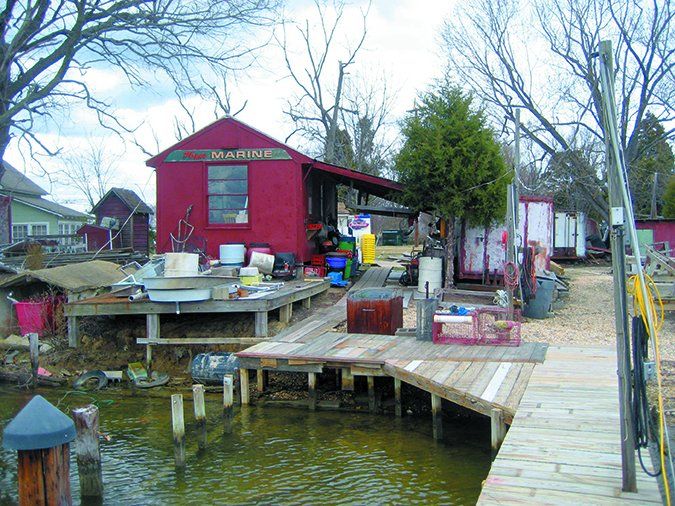
Drew Frye
Overhead
Boat storage is one of the biggest annual expenses for many owners. Look for alternative marinas. Search for houses with a few unused slips out back. How about an older work-boat marina? At my workboat marina, I went 20 years without an increase, paying 3-5 times less than sailing marinas within a few hundred yards of my own.
Stay in the water year round. Unless exceptional ice conditions require annual hauling, you can stay in the water (see Practical Sailor November 2016 online), and dry storage and hauling expenses are avoided.
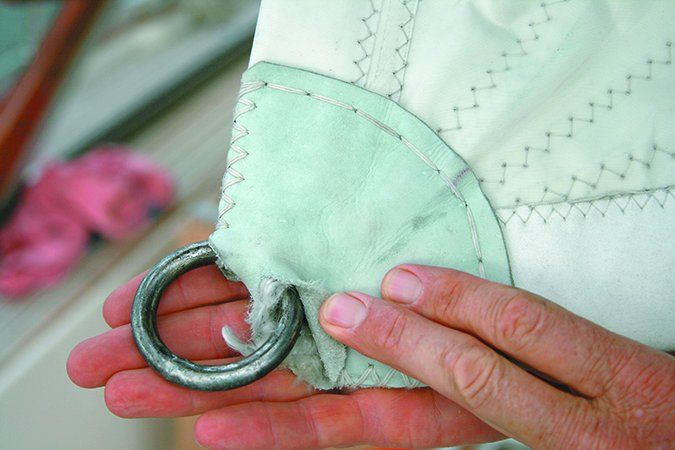
Amanda Neal
Insurance. Read the fine print. Buy coverage for where you actually sail, not for your dreams; when distant travels are imminent, call for an upgrade. Cover only the seasons you sail; for example, boats stored in the water year round are eligible for a discount if winterized or otherwise laid-up. The definition of laid-up can be very modest, requiring just two weeks of the year-even allowing the boat to stay in the water.
Reducing Maintenance Costs
In the U.S. some of the biggest savings will be in maintenance costs, especially labor. Anything you can do yourself can save money. You do need to have the time and develop some skills.
Learn sail repair. A stitch in time really does save nine, and sitting in the cockpit with a needle and palm is therapeutic. There are few secrets you can’t learn through practice, reading, and imitation. In 30 years, the only sail or canvas repairs Ive paid for are a dodger window replacement, a sacrificial UV strip on the genoa, and two new sails.
Use waterproof grease. With every new-to-us boat has come a host of electrical gremlins. With very few exceptions, a good cleaning and a coating of waterproof grease was a permanent fix (Practical Sailor, December 2010).
Install with anti-seize. Frozen fasteners discourage repair work and can make it expensive when stuff breaks. While there are some great dedicated products out there (see Practical Sailor, July 2018), weve been happy with Lanocote, Loctite Marine Anti-seize, or Tef-Gel for most uses.
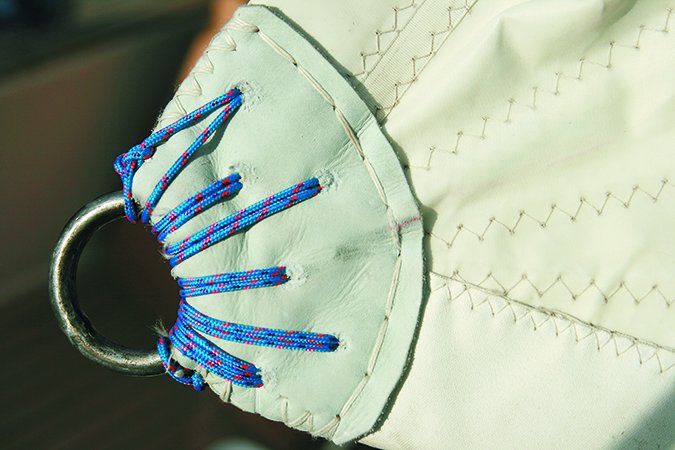
Amanda Neal
Use a good bottom paint. Two-year paints help cut haulout costs. Check past PS tests and compare with local results from slip-mates, or marinas. Where I live, I’ve been very happy with PCA Gold purchased on sale (Practical Sailor, September 2015).
Watch chafe and wear. Lines-running and mooring-can last for many years if you don’t let them rub or slap. Coverings and coatings can really help. (Practical Sailor, July 2011, March 2015)
Learn painting (and composite repair). With just a few skills, proper tools, and practice, you can save hundreds of dollars with one simple repair.
Spring (and winter) cleaning. Go through every boat locker twice each year. You’ll avoid repeat buying, gain space, and stow things smarter. The lighter boat will reward you with better handling and speed.
Use covers. Hatch covers delay the effects of UV (Practical Sailor, March 2016). We have awnings over the vinyl, covers for most hatches, and a cover for the for clear vinyl. Many of these were made from old Bimini tops and project leftovers.
Beyond the Big Boxes
Online shopping opens a world of options for sailors far beyond marine-focused websites. We recommend sticking with reputable vendors and familiar products when shopping online-or do plenty of research. In many cases, the thing you need is right down the street at the local hardware store.
Hardware stores. For consumables like fluids, paints, and glues, search the hardware store inventory (beware of metal pitfalls, see this months Mailports discussion of seacocks and through-hulls)-for products that will serve your purpose as good as a higher-priced marine-grade product. For example, Loctite PL S40 is a white household polyurethane caulk (Practical Sailor, March 2015) much like 3M 4200 that we use for everything above the waterline.
Marine Consignment Shops. Some folks swear by them, although depending on the item, the savings may only be proportionate to remaining useful life. We posted a listing (A Treasure Hunting Guide to Secondhand Boat Gear, Practical Sailor, February 2011) of the better known shops. However, with secondhand-whether consignment, dumpster or friend-safety gear deserves a very close inspection, and we avoid used stainless for critical fittings subject to fatigue (standing rigging, anchor shackles, highly loaded tackles).
Outdoor stores. Tubular nylon climbing webbing makes great chafe gear for pennies per foot (Practical Sailor, March 2015). REI Co-op and other outdoor stores. Bolt hangers make strong U-bolt substitutes (Practical Sailor, September 2012).
Be a Pack Rat. Aluminum or FRP plate, a bit of stainless tubing, some left over wire, scraps of good wood, a bit of gasket material, and leftover old fasteners; never old junk parts, but usable sections of materials that might be found in a hardware store or West Marine. Keep it neat.
Generic Engine Parts. You can often find identical engine parts that match the required specs, but are sold less expensively in a different market. For example, lawn mower filters are perfect for small outboards. My 3.5 Merc had only a fuel tank mounted strainer; adding a $3 inline strainer improved reliability.
Systems
Marine systems like air-conditioning, propulsion, refrigeration often require skilled technicians to service. The more you know (and the less you have), the more you save.
Use your engine. Even if you arent going anywhere, put it under load at the dock or mooring.
Use proven additives, not just for seasonal storage. The improvement in reliability and reduction in corrosion makes them money savers. A marine environment is wet and corrosive. (Practical Sailor, August 2012, August 2013)
Vent filter. With gas engines, the reduction in evaporation will pay for the filter within five years. The improvements in reliability are just icing on top. Diesel benefits from dry storage, reducing potential for bug growth and corrosion (Practical Sailor, January 2013).
Miscellaneous Savings
Aim for long life. For example, cheap sanitation hoses don’t last, increasing both labor and materials cost (Practical Sailor December 2013). Search long-term test in Practical Sailors archives and you’ll find some winners.
Haul out time. Hauling in the winter results in a large storage bill while you wait for temperatures suitable for working with paint and adhesives. Instead, haul early in the summer, have a project list, and knock it out in a timely, workman like manner. Unless the projects are huge-one year I added 2 feet to the stern of my catamaran-a single week is enough time to knock out a few projects while the antifouling is drying.
Access. When new equipment is installed, or failed equipment replaced, give access a priority-especially equipment like water makers that need routine maintenance.
Electrical repairs. Get a book on marine wiring like the Boat Owners Mechanical and Electrical Manual and a good ratchet crimper (Practical Sailor August 15, 2003). Even if you apply your new found knowledge only to troubleshooting, its a blessing when trouble strikes while somewhere remote. Focus on doing professional quality work.
Crimp connectors and wire. All the connectors for the 2-year salt chamber torture test (Practical Sailor, December 2010) were Gardner Denver, for a fraction of the Ancor price. Non-tinned THHN wire meets Coast Guard requirements and works fine in dry areas. Do use adhesive-lined seals on crimps with tinned wire, and use tinned wire in damp places. Using cheap materials here would be false economy.
Electronics. An electronic suite offers safety and convenience, but if you are truly out to save money, the fewer electronics the better. An experienced coastal sailors can do smartly with just a VHF and a sounder-some even go without these (Practical Sailor, January 2008). Before splurging on a handheld mapping GPS, try a navigation cell phone, or tablet app (Practical Sailor, March 2012).
Technical Editor Drew Frye sails out of Chesapeake, VA. He is the author of the book, Circumnavigating the Delmarva. His blog is www.sail-delmarva.blogspot.com.





























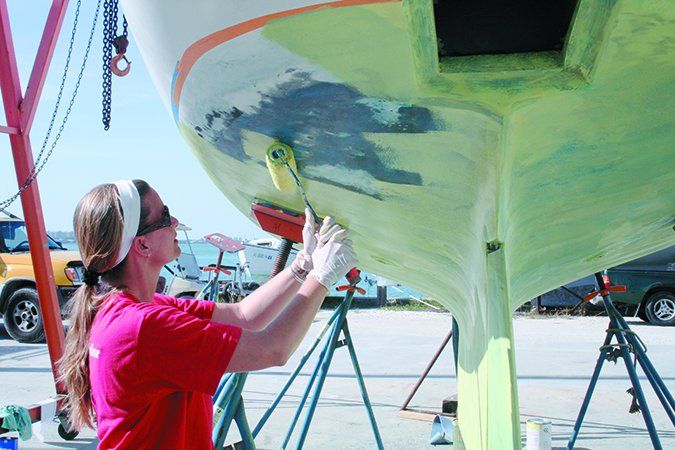
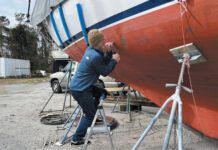





Interesting and good ideas.
Well composed advice all sound and very much on point! Follow this advice and you will be richly rewarded by many trouble free days on the water and and an durable kn owledge of your boat.
Important to know how to sail properly in general.